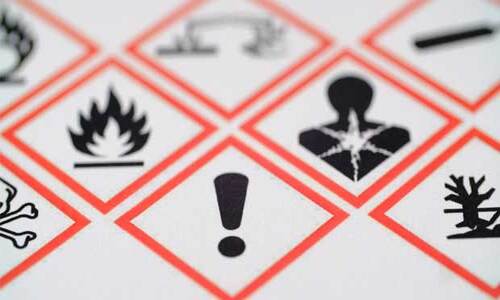
“According to the U.S. Bureau of Labor Statistics (BLS), there were approximately 2.8 million nonfatal workplace injuries and illnesses reported by private industry employers in 2019.”
This statistic highlights the pervasive risks employees face and underscores the importance of robust Management of Change (MOC) procedures to manage changes and mitigate these risks (Reference: BLS).
Overview
Management of Change (MOC) is a fundamental process within Environmental, Health, and Safety (EHS) management systems. It involves systematically managing changes to ensure they do not introduce new hazards or worsen existing ones. Effectively handling these changes is vital for maintaining safety, health, and environmental standards. This article explores the importance of MOC in EHS, key components of an effective MOC program, real-world case studies, benefits, challenges, solutions, and insights from industry experts.
What is Management of Change (MOC)?
Management of Change (MOC) is a proactive and structured approach within Environmental, Health, and Safety (EHS) management systems aimed at ensuring safety, health, and environmental integrity whenever organizational changes occur. Whether these changes pertain to equipment, procedures, materials, or personnel, MOC processes help prevent new hazards from being introduced or existing ones from being exacerbated, regardless of the size of the change.
Importance of Management of Change (MOC) in EHS
The primary objective of Management of Change (MOC) is to prevent incidents and maintain safety standards. Regulatory bodies such as OSHA and the EPA mandate MOC procedures through standards like OSHA’s Process Safety Management (PSM) and the EPA’s Risk Management Planning (RMP) rule. These regulations ensure that facilities establish MOC processes to mitigate risks associated with changes, especially in industries dealing with hazardous substances.
Key Components of an Effective Management of Change (MOC) Program
- Identification and Documentation: Each proposed change must be clearly identified and documented. This includes defining the scope of the change, understanding its impact, and specifying the elements that will be altered.
- Risk Assessment: Conducting a thorough risk assessment is essential. This involves identifying potential hazards introduced by the change, evaluating the severity and likelihood of these risks, and determining necessary controls to mitigate them. For instance, changes in chemical processes may require reevaluation of chemical storage and handling procedures to prevent spills or exposure.
- Approval Process: An effective MOC program includes a multi-tiered approval process. Relevant stakeholders, such as EHS managers, safety officers, and operational supervisors, review the proposed changes. This collaborative approach ensures that all potential risks are considered and adequately addressed before implementation.
- Implementation and Communication: Once a change is approved, it must be implemented with clear communication to all affected employees. Training sessions may be necessary to educate staff on new procedures or equipment, ensuring everyone understands the changes and their implications.
- Monitoring and Review: After implementation, the change should be monitored to ensure it operates as intended without introducing new risks. Regular reviews and audits of the MOC process help identify areas for improvement and ensure ongoing compliance with safety standards.
Case Studies
Case Study 1: Industrial Facility Fire (2012) In August 2012, a fire broke out at an industrial facility due to a corroded pipe that had not been replaced. The incident released a large plume of hydrocarbons into the air, prompting local residents to seek medical attention for respiratory issues. A subsequent investigation revealed that the facility had not adequately assessed the risks associated with the corroded pipe, nor had they implemented a robust Management of Change (MOC) process to manage the change. This incident underscored the critical need for systematic MOC procedures to prevent such disasters (Reference: CSB).
Case Study 2: Refinery Explosion (2005) In March 2005, a refinery experienced a catastrophic explosion, resulting in multiple fatalities and injuries. The incident was partly attributed to the failure to implement proper Management of Change (MOC) procedures when significant changes were made to the plant’s processes and equipment. This tragedy highlighted the importance of thorough risk assessments and approval processes in Management of Change (MOC) to prevent similar incidents (Reference: CSB).
Benefits of Management of Change (MOC) in EHS
- Enhanced Safety: By systematically assessing risks, Management of Change (MOC) helps prevent accidents and injuries.
- Regulatory Compliance: Management of Change (MOC) ensures compliance with OSHA and EPA regulations, avoiding potential fines and legal issues.
- Operational Efficiency: Properly managed changes can lead to improved processes and operational efficiency.
- Improved Collaboration: Management of Change (MOC) fosters better communication and collaboration between EHS and operational teams, ensuring a unified approach to safety.
Challenges and Solutions in MOC Implementation
Challenges:
- Resistance to Change: Employees may resist changes due to fear of the unknown or discomfort with new procedures.
- Inadequate Training: Lack of proper training on new equipment or procedures can lead to safety incidents.
- Overlooking Minor Changes: Minor changes might be overlooked, yet they can still pose significant risks if not properly managed.
Solutions:
- Engage Employees Early: Involve employees in the change process from the beginning to gain their acceptance and address their concerns.
- Provide Comprehensive Training: Ensure all affected personnel receive thorough training on new procedures or equipment.
- Use Digital MOC Systems: Implement digital MOC systems to streamline the documentation, approval, and communication processes. Systems such as MoCA by OSHEPRO can help standardize the process, track changes more effectively, and ensure no step is overlooked.
How to Implement Management of Change (MOC)
Implementing a robust Management of Change (MOC) program is essential for maintaining safety and compliance in any organization. Here are the steps to effectively implement MOC:
- Establish Clear Procedures: Develop and document clear MOC procedures that outline each step of the process, from identification to monitoring.
- Assign Responsibilities: Designate specific roles and responsibilities to ensure accountability throughout the MOC process.
- Provide Training: Conduct regular training sessions to educate employees on MOC procedures and the importance of compliance.
- Use Technology: Leverage digital tools like OSHEPRO’s MoCA to streamline MOC processes and ensure thorough documentation and tracking.
- Conduct Regular Audits: Periodically review and audit the MOC process to identify areas for improvement and ensure ongoing compliance.
OSHEPRO and Its Role in MOC
OSHEPRO is an all-encompassing EHS management software that automates the MOC process, ensuring accurate classification and documentation of changes according to OSHA standards. It helps efficiently document near-misses and various hazards, supports thorough incident investigations, and manages corrective actions. By streamlining MOC data collection and documentation, OSHEPRO not only saves time but also reduces the risk of costly errors, helping organizations stay compliant effortlessly.
Implementing a robust MOC program is essential for maintaining safety and compliance in any organization. By using applications such as OSHEPRO’s MoCA to systematically manage changes, organizations can mitigate risks, enhance operational efficiency, and ensure a safer workplace for everyone. Effective MOC processes are not just about compliance; they are about creating a proactive safety culture that protects employees and the environment from potential hazards associated with change.


.png)
.png)


.png)


.png)




.jpg)









